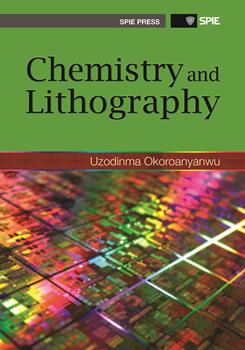|
As stated in Chapter 1, the so-called information superhighway is paved with chips of crystalline silicon made by lithography, for it is the key technology process step with which we are able to create fine patterned structures that ultimately form the devices and interconnects of complex functional integrated circuits used in microelectronics. As a matter of fact, both circuit speed and integration density depend on the lithographic minimum printable feature. Today, lithography represents over 35% of the chip manufacturing cost in the semiconductor industry. The increasing cost of lithographic exposure tools is recognized as one of the most critical factors for keeping up with Moore's law. Although lithographic patterning is not the only critical step in integrated circuit device manufacture, its specifications are by far the most stringent and also the most consequential. This arises not only from the requirements on a given patterning step for tight dimensional control and absence of defects, but also from the sheer number of patterning steps that a modern device structure undergoes. It is not uncommon for many integrated circuit structures to pass through 30 or more patterning steps in the course of fabrication. Under such conditions, the need for precise, reliable, and reasonably low-cost lithographic solutions is imperative. Equally imperative are ways of overcoming the challenges presented by ever more demanding applications of sophisticated chemistry in semiconductor lithography, in terms of materials, processes, and tools. A modern lithography module clean room for patterning silicon chips is a masterpiece of automated chemical engineering, operating at its highest efficiency and effectiveness when it is operated by the fewest possible number of operators in order to minimize contamination and to improve both control and uniformity of lithographic processes. Moreover, the fabrication of increasingly powerful and sophisticated computers depends on advances in the design of circuits that match advances in the sophistication of IC device fabrication technologies, especially lithography. |
|
|


